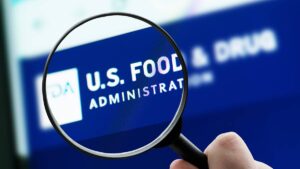Dr Boreham’s Crucible: CSL layer cake fails investor taste test – what’s next on the menu?

Tim Boreham is one of Australia's best-known small-cap share analysts and business journalists.
Accompanying an already dense full-year results announcement, CSL’s revelation of a multi-faceted get-fit program last week sent investors and analysts into brain overload.
CSL CEO Dr Paul McKenzie dubs the “major transformational changes” as significant measures that will “improve CSL’s clinical and commercial pipeline execution while reducing cost and simplifying decision-making across the organisation.”
If management expected an ebullient response, it misread the room: investors immediately wiped 17% – or more than $20 billion – off the value of the company.
The stock is yet to recover.
Built on Sara Lee style, layer-upon-layer anxieties, the reaction seems perverse. After all, CSL still produced a seemingly hearty 14% rise in net profit for the year to June 30, 2025.
But management served up a complex cheesecake.
Analysts fretted about a range of factors, including eroding profit margins and the shadowy backdrop of Trump’s tariffs and Most Favoured Nation drug pricing policies.
Investors also weren’t assuaged by the company’s ambitious plans to save more than US$500 million annually, partly by getting rid of 3000 people.
They were also unimpressed by CSL’s plans to demerge its Seqirus influenza arm, even though such bifurcations tend to add value.
Is the selloff justified?
Far be it for your columnist to say whether the market is right or wrong … it’s always right, isn’t it?
But below we examine the key ingredients of CSL’s dessert that failed the taste test.
Firstly: who’s CSL?
CSL is the biggest plasma-derived therapeutics house, vying with Takeda, Grifols, Octapharma and Baxter.
Seqirus markets ’flu vaccines and a few other bits and bobs.
The then government-owned entity Commonwealth Serum Laboratories, CSL was founded in 1916 to supply wartime vaccines.
The company later expanding to areas including penicillin, insulin, snake venom and – yes – plasma fractionation.
In 1994, the then Keating Government privatised the company at a bargain-basement $2.30 a share. The company split these shares three ways in 2007.
In 2004, CSL acquired German plasma rival Aventis Behring.
The company’s core division, Behring, takes blood (plasma) from donors and turns it into therapies for conditions pertaining to immunology, haematology, cardiovascular, neurology, respiratory and transplants.
Then known as CSL Bio, Seqirus acquired Novartis’s influenza drug business in 2015. The purchase made Seqirus the second biggest influenza player in a US$7 billion a year sector.
In 2022, CSL paid US$12 billion ($17 billion) for Vifor Pharma, which specialises in the renal (kidney) market (notably dialysis and iron deficiency).
From listing, CSL was steered by Dr Brian McNamee, who is now chair.
Paul Perreault took over in August 2013 and fellow American McKenzie succeeded him March 2023.
Is demerger de best way forward?
In the flurry of post-announcement dissection, the proposed Seqirus demerger has been given scant attention. That’s because the only known detail is that it should happen by June next year.
The proposed action is not so much a case of ‘sayonara Seqirus’ – as one broker dubbed it – as ‘howdy cousin’.
Shareholders will still hold the same interest in Seqirus – just as a separate vehicle – and are free to sell it while continuing to own the mothership.
McKenzie says a demerger provides a “compelling strategic rationale for both entities”.
He says a demerger will “reduce complexity, making both businesses more agile and efficient to manage”.
Demergers also duplicate boards and listing costs and can create ‘dis-synergies’.
That said, they tend to be magic puddings: more often than not, they enhance the value of both entities.
According to KPMG, 20 out of 28 demergers on the ASX since 2000 have outperformed the broader market. Over two years, the average gain across both entities has been around 33%.
Beh-ring good and bad news
Behring’s revenue gained 6%, to US$11,158 million.
Operating profit rose 9%, to US$4372 million.
D McKenzie cites demand for core immunoglobulin (Ig) products, notably the intravenously delivered Privigen and the higher-margin sub-cutaneous Hizentra (8% and 6% sales growth respectively).
Immunoglobulin accounts for half of the division’s turnover.
Also important, the haemophilia portfolio grew 13%, including 10% growth for Idelvion.
Albumin product sales grew 7%, driven by Chinese demand.
Management expects a sales spurt from Andembry, a more convenient hereditary angioedema prophylactic launched in June following FDA approval.
Behring’s gross margins improved to 51%, from 49.7% a year previously. Management intends to restore them to the pre-pandemic level of 57%, but won’t commit to a timeline.
CSL chief financial officer Joy Linton says the rollout of new blood collection platforms, called Riki and I-Nomogram, improved per-litre costs.
But the company needed to increase labor costs to enable the changes, so it’s closing 22 collection centres (7% of the US complement).
Yes – every action has an equal and opposite reaction.
One analyst described immunoglobulin revenues as “soft”.
This is partly because the company chose not to participate in some low-margin tenders (“non-regrettable losses”, in management-speak).
Winning this work would have boosted revenue by 3-4 percentage points.
“It’s really more competitive than ever before, and we’re being very purposeful in where we play and how we play,” says Behring executive Andy Schmeltz.
Seqirus is a bit sniffly, but soldiers on
Seqirus’s revenue rose 2% to US$2,166 million, while profit eased 9% to US$1,122 million.
McKenzie describes this as a “robust result, given the decline in vaccination rates”.
Sales and marketing costs rose as the business prepared to launch into new markets of Germany, France and Korea.
“We view the softness in the US seasonal category as highly irrational based on the vaccine risk/reward profiles and the scale of disease burden which this year reached a 15-year high,” McKenzie says.
Seqirus launched the Fluad quadrivalent vaccine in Taiwan and South Korea.
The company also won the majority of avian ’flu contracts: “strong recognition of our best-in-class differentiated platforms”.
This year, management expects seasonal influenza revenue to stabilize, despite a “substantially lower contribution” from avian influenza and Covid-19 vaccines.
McKenzie says CSL has invested in the paediatric vaccine sector and has attained a circa 20% market share.
Vifor? Now we know
When CSL acquired the Swiss-based Vifor three years ago, investors quickly yodelled their concerns. The price tag aside, critics opined the business was far-flung from CSL’s core skills.
Well, it’s a fast-changing fondue.
Vifor was last year’s best performing division, with revenue up 8% to US$2,234 million and profit up 14% to US$956 million.
McKenzie cites Vifor’s ability to hold iron treatment volumes in Europe, while its Injectafer remains the leading high-dose intravenous iron therapy in the US.
Meanwhile, Vifor has launched Ferinject in China, with “hospital listings and demand generation ahead of targets”.
Management is also pleased with the US performance of the nephrology treatments Velphoro (blood phosphate control) and Tavneos (for a rare and serious autoimmune disorder).
Vifor launched Filspari, which preserves kidney function, in Germany, Austria and Switzerland.
Finances and performance
CSL reported a net profit of just over US$3 billion, up 14%.
This outpaced revenue growth of 5%, to US$15,558 million.
Assuming currencies don’t move, management guides to current year revenue growth of 4-5%.
Excluding restructuring costs (see below), net profit is expected to be US$3,450- $3,550 million, up 7-10%.
Management also has guided to double-digit earnings growth “over the medium term”.
With US$2,150 million of cash and US$1,150 million of debt, CSL is not exactly going broke.
Ms Linton notes debt has fallen to 1.8 times earnings, from 2.2 times previously.
To avoid the ‘lazy’ balance sheet syndrome and boost earnings per share, CSL is also reintroducing a share buyback to run over multiple years ($750 million this year).
CSL spent US$1,359 million on research and development, down 5%.
“We expect a similar level of expenditure for R&D in [the current year] with a focus on prioritising growth opportunities,” Ms Linton says.
Potential research and development (R&D) activities include ‘real world’ evidence’ iron deficiency and immunoglobulin studies.
While Andembry was a great exemplar of R&D, CSL last year missed the mark with the failure of a $1 billion, 18,200 patient trial to prevent secondary heart attacks.
“Our R&D output has not been where we had hoped it would be,” McKenzie laments.
Over the last 12 months CSL shares have coagulated from $309 in mid-August last year, to a low of $213 on August 20 (post results day).
The stock peaked at $329 in the good ol’ pandemic days of April 2020.
Cutting to greatness?
CSL doesn’t need a three-day summit and 24 luminaries to nail down a productivity manifesto.
“We are pleased with [our] performance, but we know we must rapidly adapt to position ourselves well into the next decade given a constantly evolving operating environment,” McKenzie says.
The centrepiece is at least US$500 million in cost savings by June 2028, with 3,000 job losses (15% of the workforce, excluding blood collection centre staff).
About half the savings will be reinvested in “high-priority opportunities”.
An immutable corporate lore is that one needs to spend money to save money. The efficiency drive will cost a one-off, pre-tax US$700-770 million, to be recognised in the current financial year.
Most of the US$500 million-plus of annual savings will be seen by June 2027.
CSL also flags capital expenditure of around US$800 million, “plus or minus US$100 million”. In part, this will fund expanded immunoglobulin capacity in the US “over the medium term” – a politically astute investment given Donald Trump’s war on foreign drugs.
Dr Boreham’s diagnosis
“As an engineer, I spent my career dealing with complexity,” McKenzie says.
(McKenzie holds a chemical engineering degree from the University of Pennsylvania and a Ph D in the same discipline from Carnegie Mellon University.)
“CSL has a track record of succeeding in this type of environment … however, in a constantly changing world, it is necessary to evolve our approach.”
Can management engineer the desired changes?
A perverse aspect of last week’s angst outbreak among CSL analysts is that most of them still ascribe ‘buy’ calls on the stock, with price targets typically around $300.
The most bearish, Bell Potter has a $240 valuation, having cut its call from a buy to a hold.
So … even the detractors believe CSL is fixable – if it’s broken in the first place.
Given the company collects and processes blood in the US, management believes tariffs will be a non-issue (our words) and it will navigate any Most Favoured Nation pricing reforms.
There’s little doubt that CSL faces headwinds on multiple fronts, notably pricing. But century-old companies have endured for a reason and that’s because they are robust and adaptable.
As with management we won’t be drawn on timelines, but we’re confident the ‘CS-Hell’ era will pass sooner rather than later.
At a glance
ASX code: CSL; US (over-the-counter): CSLLY
Share price: $210.27
Shares on issue: 484,212,123
Market cap: $101.82 billion
Financials (year to June 30, 2025): revenue US$15,558 million (up 5.1%), net profit US$3,002 million (up 13.6%), earnings before interest and tax deprecation and amortization US$5,151 million (up 8.4%), final dividend per share US$1.62 (up 11.7%), cash of US$2,157 million (up 30.2%), total debt US$11,498 million (down 6%).
Chief executive officer: Dr Paul McKenzie
Board: Dr Brian McNamee (chair), McKenzie, Prof Andrew Cuthbertson, Dr Megan Clark, Caroline Hewson, Marie McDonald, Alison Watkins, Samantha Lewis, Elaine Sorg, Dr Brian Daniels
Identifiable major shareholders: Blackrock Group 5.6%.
Dr Boreham is not a qualified medical practitioner and does not possess a doctorate of any sort. He won’t be drawn on the exact nature of his credentials, but rest assured he is robust and adaptable.

UNLOCK INSIGHTS
Discover the untold stories of emerging ASX stocks.
Daily news and expert analysis, it's free to subscribe.
By proceeding, you confirm you understand that we handle personal information in accordance with our Privacy Policy.








